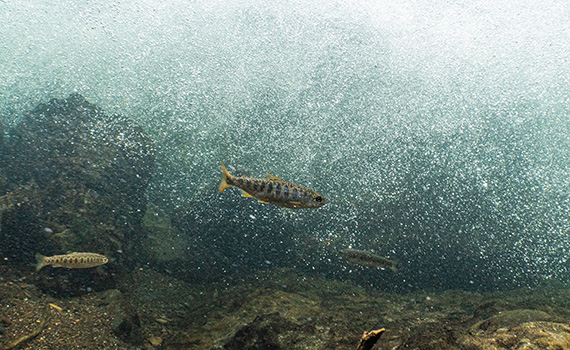
Salmon farming’s smolt focus drives demand for novel gill diagnostic
New gill-tissue diagnostic technology is enabling Atlantic salmon producers to more accurately monitor smoltification and determine the ideal time to transfer smolt to sea, thereby helping them to improve fish survival and welfare through harvest.
Commercialized by PHARMAQ Analytiq AS, the analysis — marketed as SmoltVision — is a real-time polymerase chain reaction (RT-PCR) test that measures three genetic markers in gill tissue that are directly related to important changes that occur in the gills as the fish prepare to transition from freshwater to seawater.
The genetic markers are expressed specifically by chloride cells, explains Elise Hjelle, commercial and technical manager at PHARMAQ. Two of these markers are linked to genes coding for the specific freshwater and seawater isoforms of the ATPase enzyme. The third marker relates to a cofactor gene found in a type of chloride cell that is exclusively associated with seawater tolerance. An increase in this marker, combined with an increase in seawater ATPase, is a strong indication that the fish population is increasing its seawater tolerance, she explained.
“When the fish start to get ready to go to sea, we see that the seawater ATPase expression increases and the freshwater ATPase decreases. This is in line with the population building up greater seawater tolerance,” she said.
“Within commercial salmon production, the ability to differentiate between saltwater and freshwater ATPase expression is shown to be an incredibly beneficial tool for a more precise understanding of the development of saltwater tolerance and of the optimal time of transfer to sea.”
More than a smoltification test
SmoltVision also picks up on a variety of other factors that make it useful for monitoring not only the smoltification process, but also fish health and welfare, Hjelle noted
“The cofactor is like a gill-health indicator. For a normal, healthy fish, you don’t expect to see any significant changes or increase in the cofactor gene,” she explained “But if you have underlying problems with the gills, like damage or disease, then the cofactor will start to spike outside the normal range, and this gives a warning that there are underlying problems affecting the smoltification process.”
The cofactor gene can also be an important gill-health indicator after transfer, Hjelle noted This makes SmoltVision a valuable tool once the fish have been transferred to sea cages, where it has picked up on various issues including algal bloom damage and toxic response post-transfer. When disease is suspected, she said, ordinary RT-PCR analysis can be performed on the same test material, helping to save time while avoiding the need to take new samples.
Older tests no longer adequate
With smolt size on the rise, the ability to precisely monitor smoltification is especially important, Hjelle stressed
Commercialized in January 2017, SmoltVision is now in wide use across all the major salmon markets. Because there can be considerable individual variation in the time that a fish population starts smoltification, PHARMAQ Analytiq advises taking three sampling points of 20 fish per point. To detect these discrepancies, sampling points should be selected from tanks that are representative of the population as a whole.
Posted on: February 08, 2021






